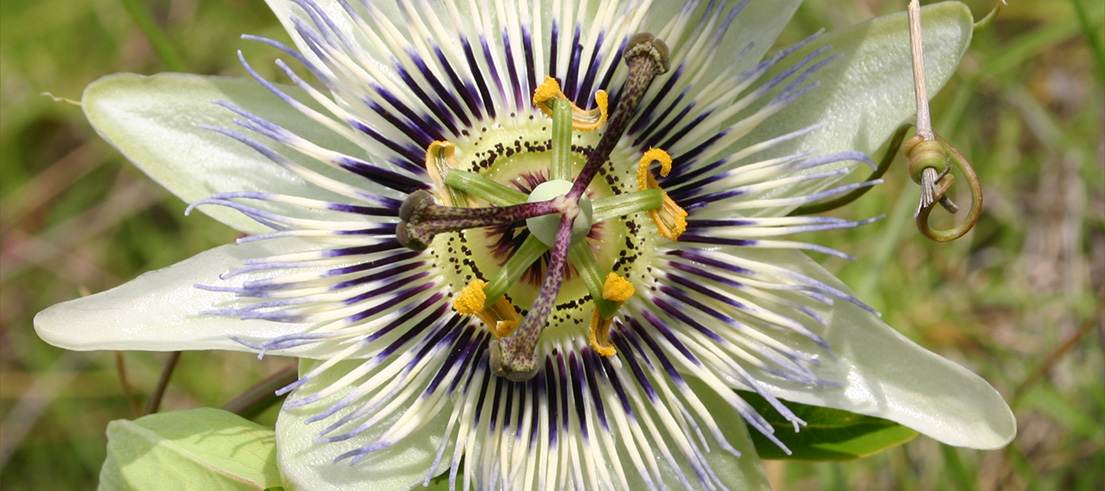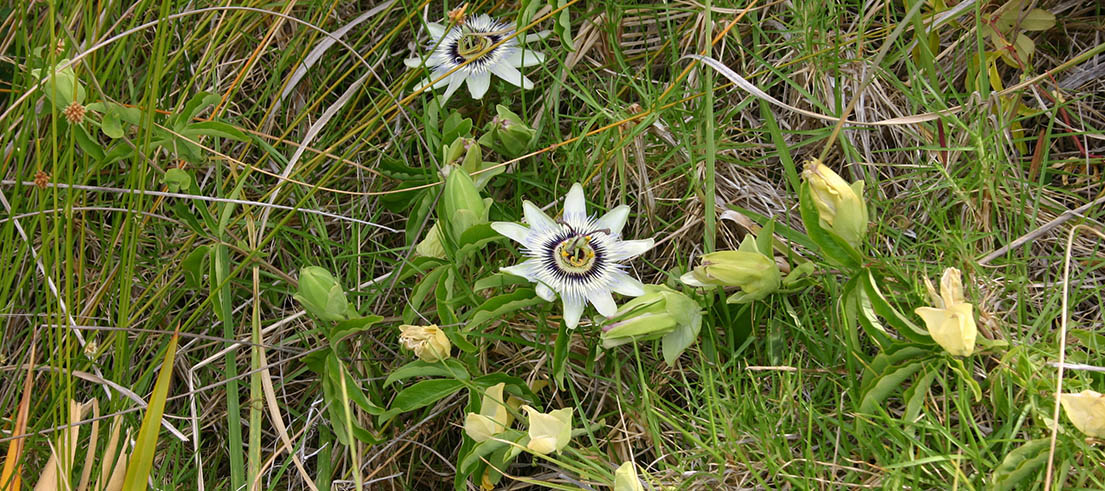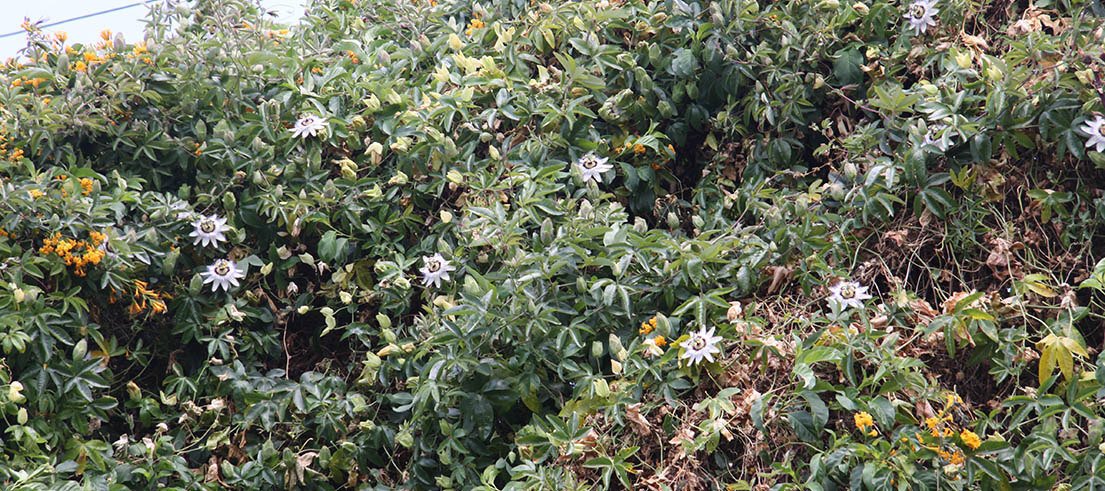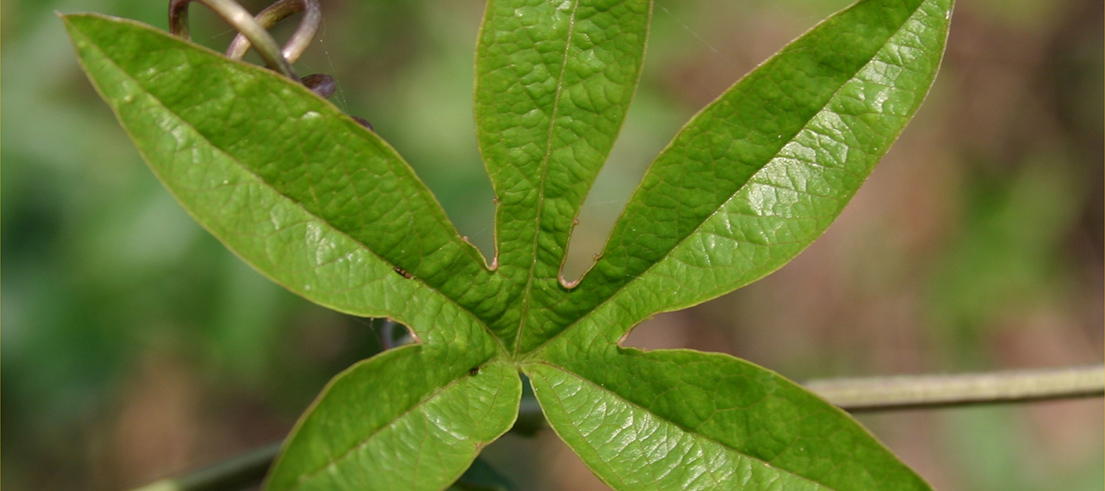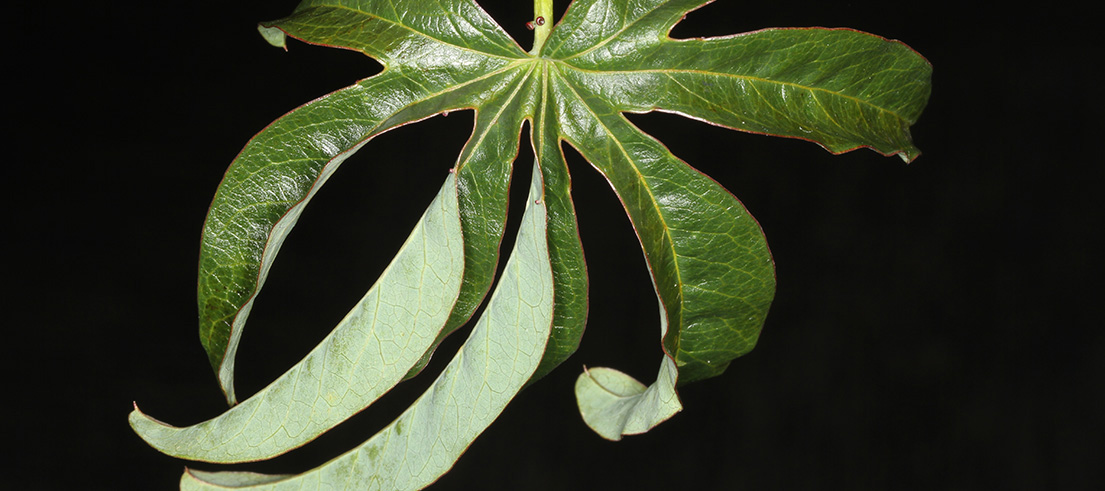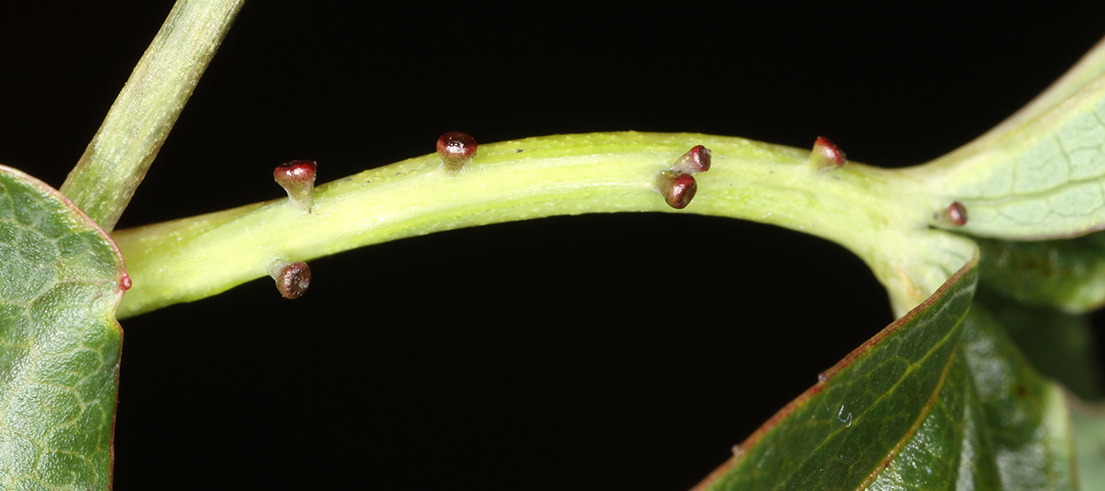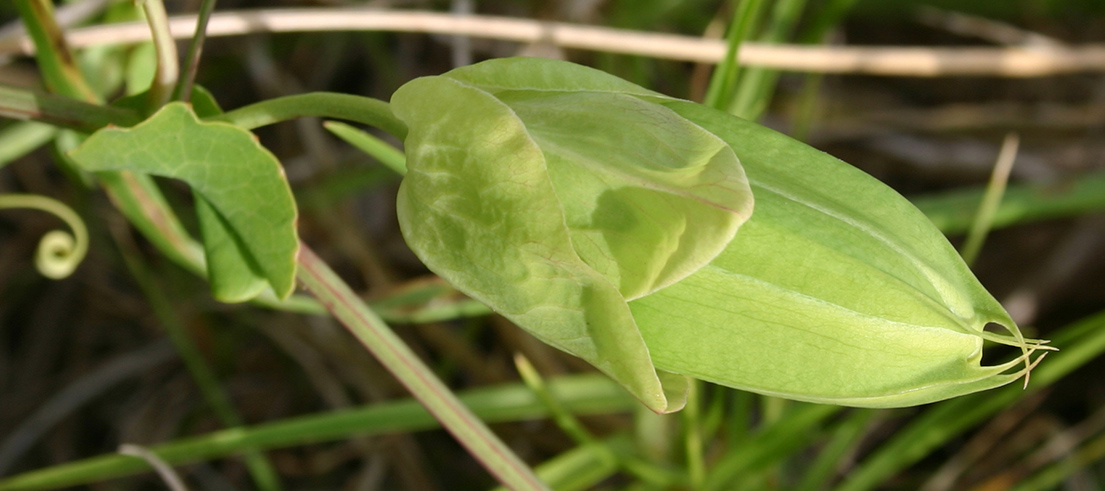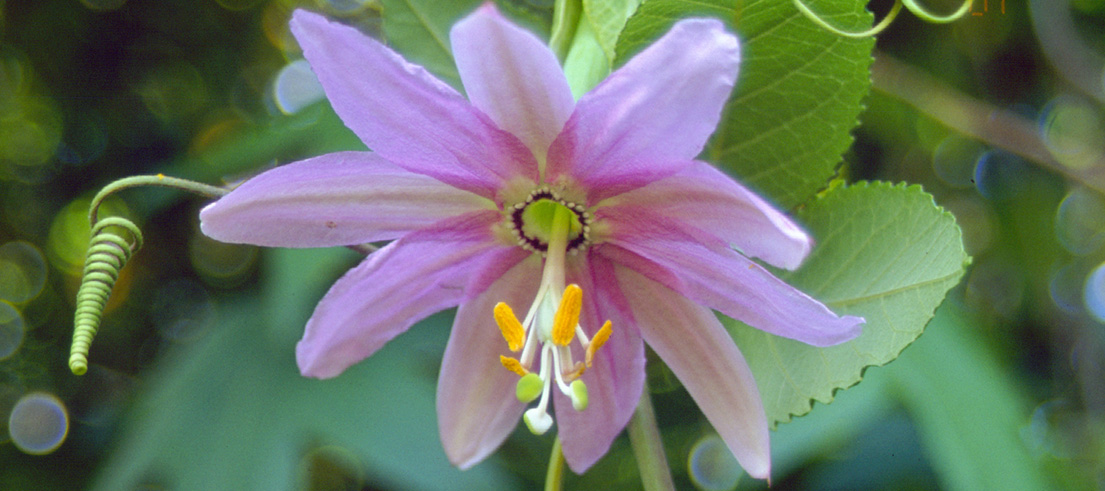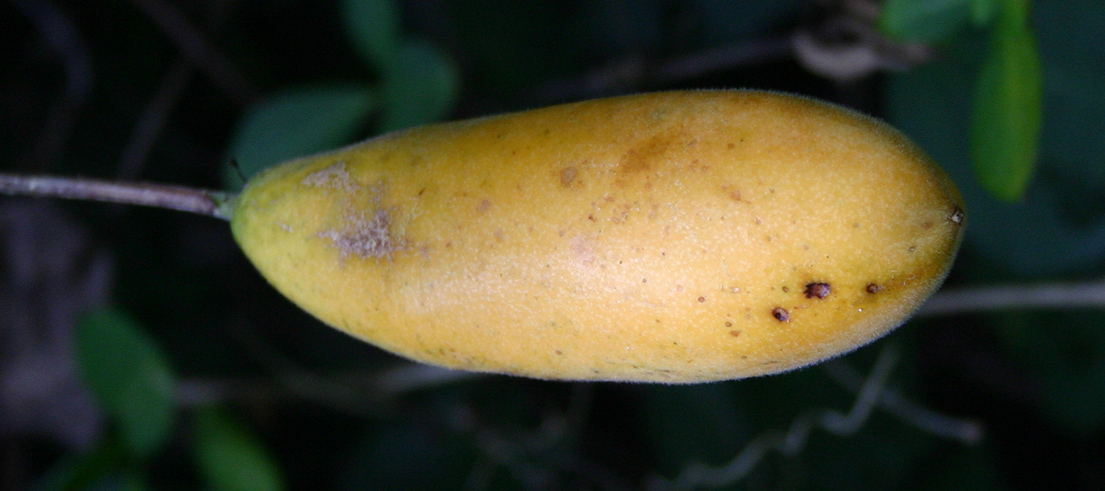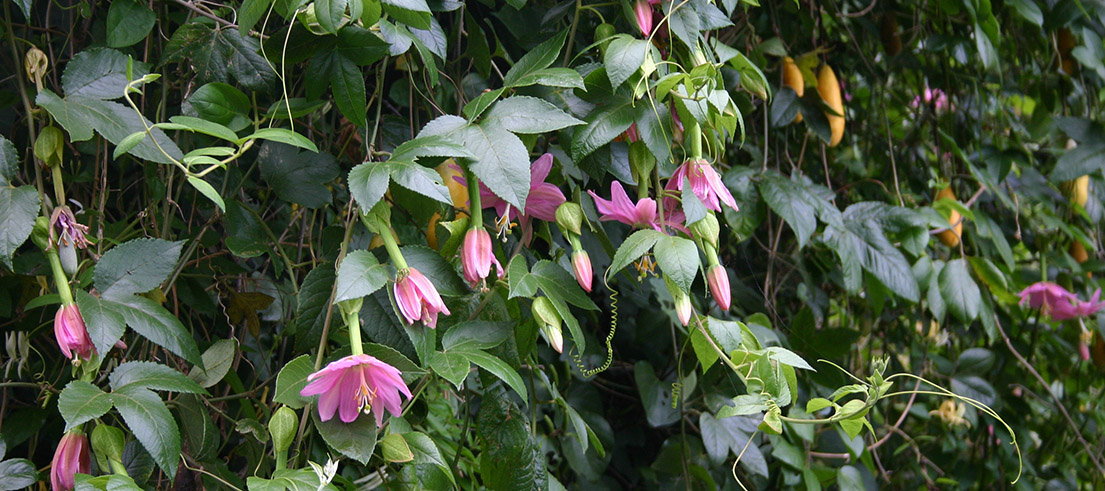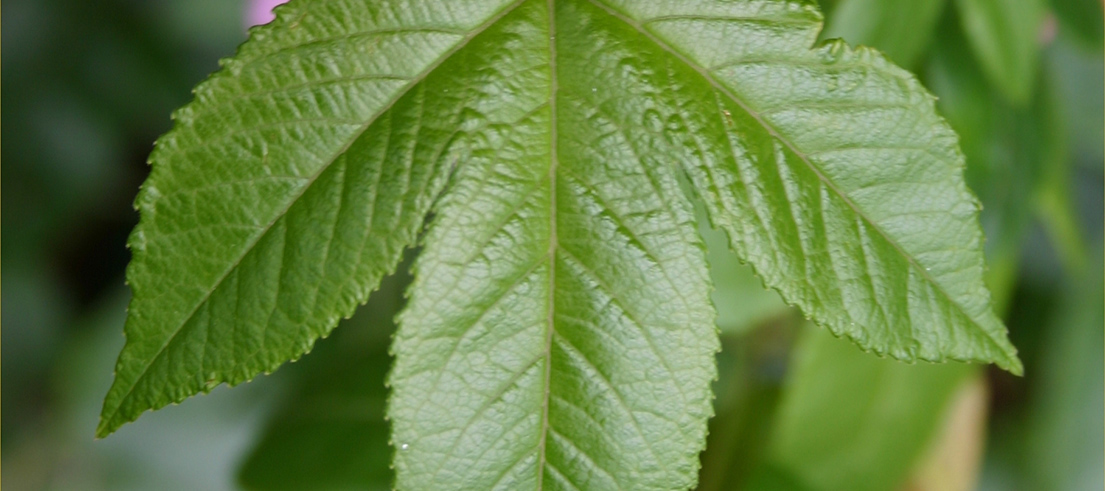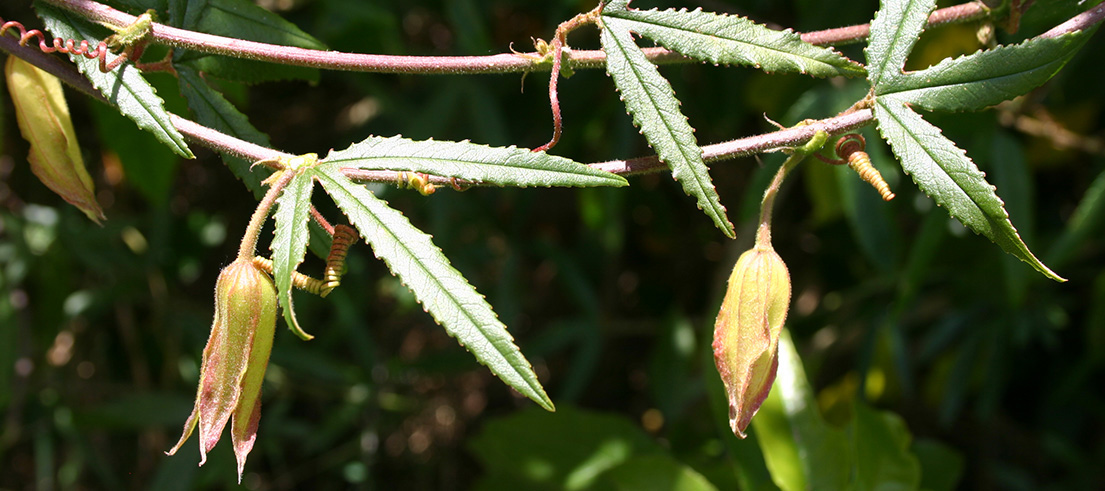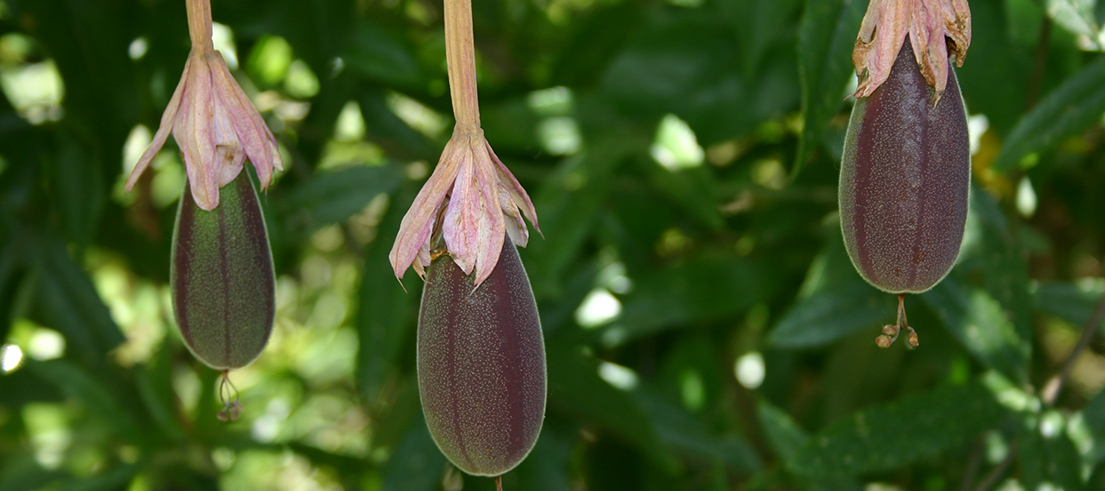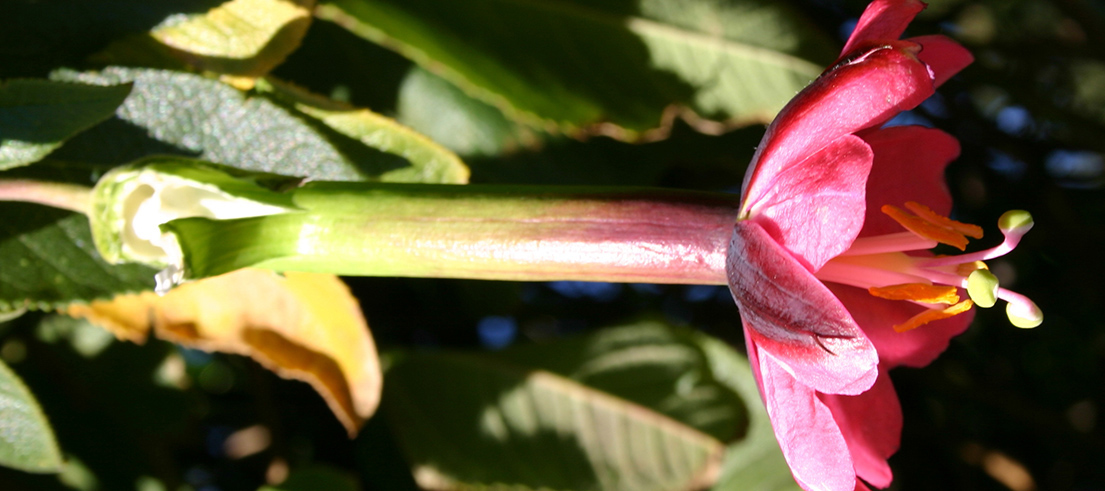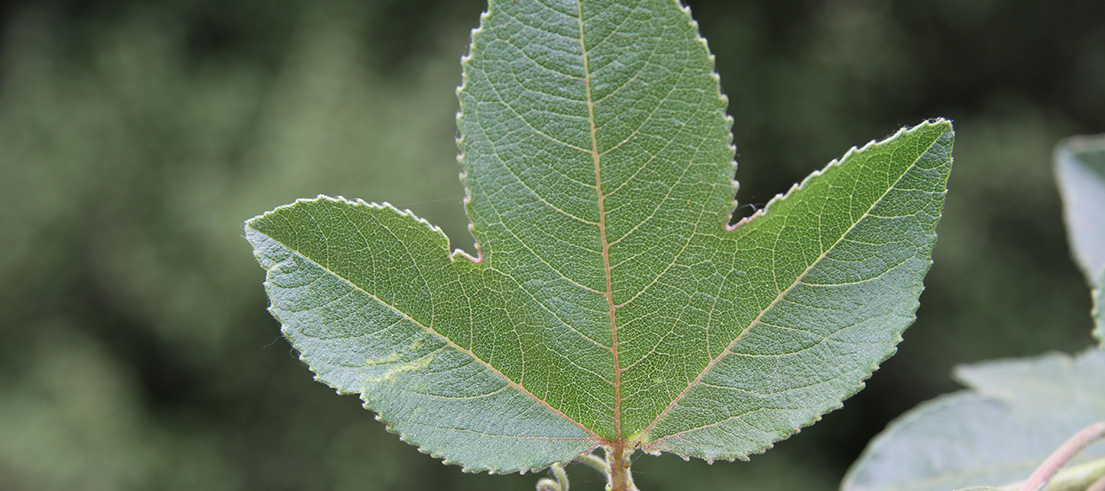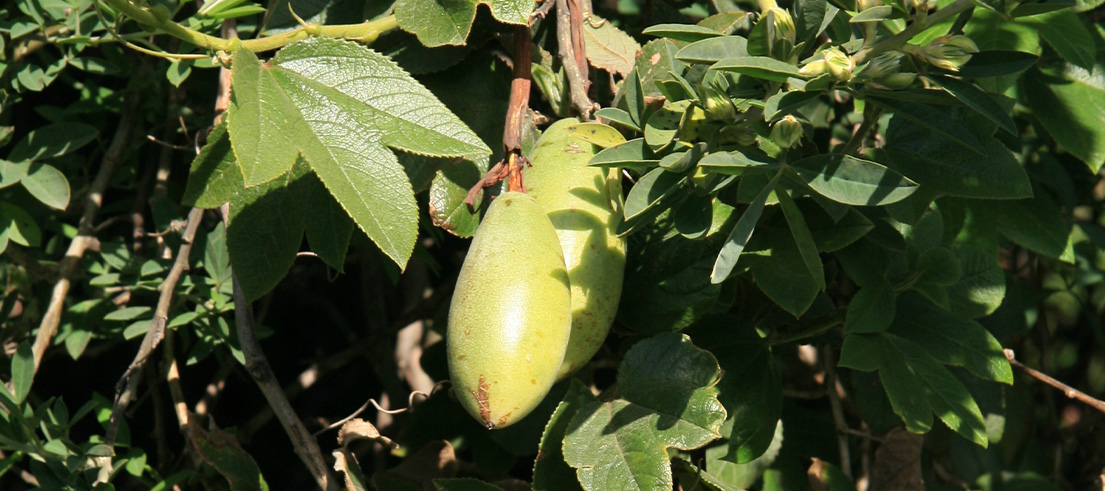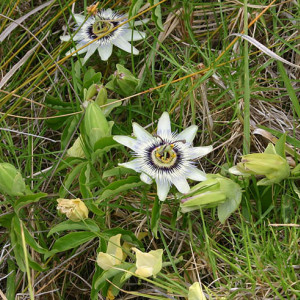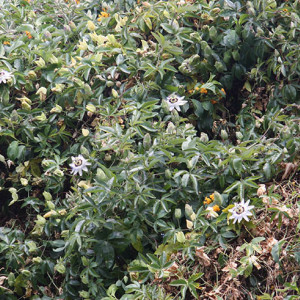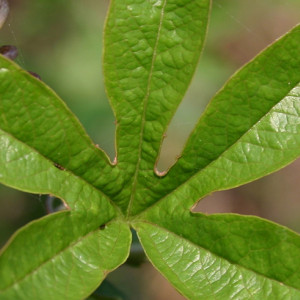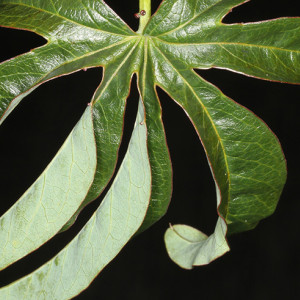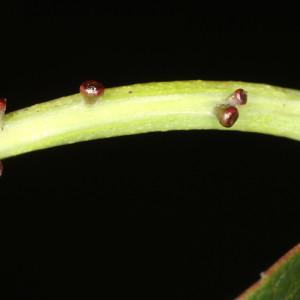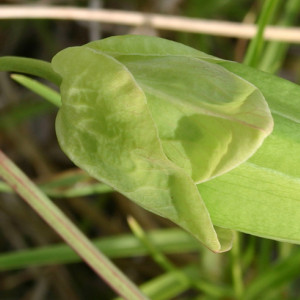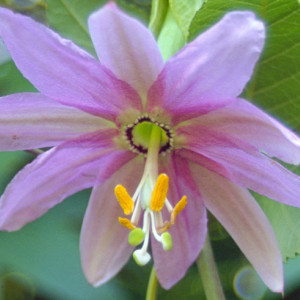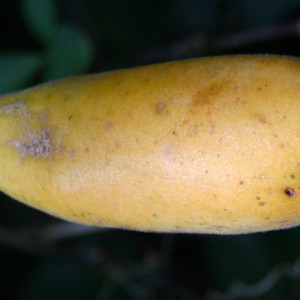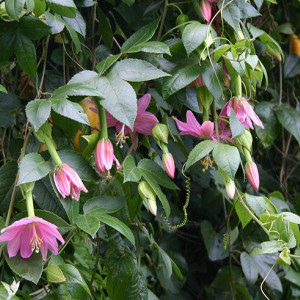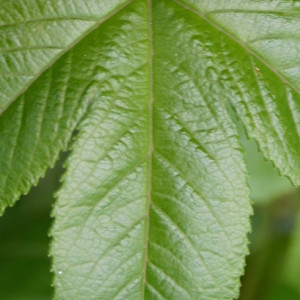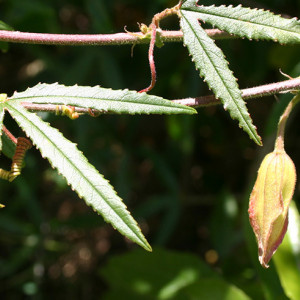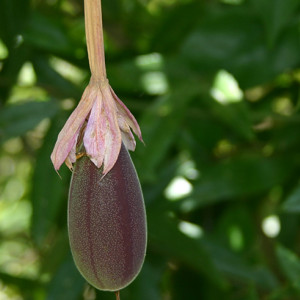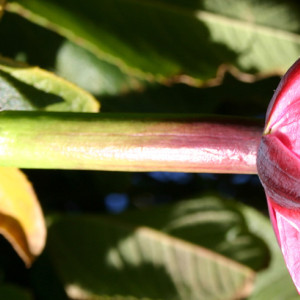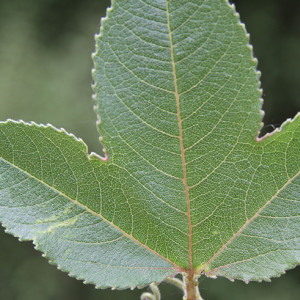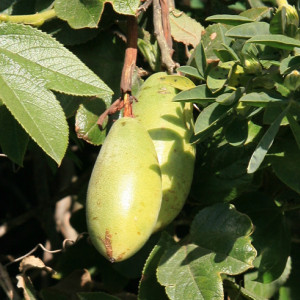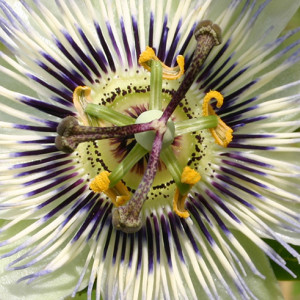Banana passionfruit is a perennial, high-climbing vine with green fruit that ripens to orange/yellow, and has an edible pulp. It smothers native vegetation and can host Passiflora latent virus.
Description
- Stems are cylindrical, covered in tendrils and coated in yellow hairs.
- Leaves are triple-lobed and less than 14cm long, with a downy top and densely hairy underside.
- Flowers are pendulous and pink, with a floral cup less than 10cm long and short petals, that can occur year-round.
- Seeds are dispersed by birds, possums and feral pigs. Vegetative spread from stem fragments.
- Human-mediated dispersal through dumping of garden waste and deliberate plantings.
- Habitats include disturbed and open forests, forest and riparian margins, shrublands, cliffs, sand dunes, roadsides, hedgerows, wastelands, and gardens.
What you need to know
Smothers native vegetation and prevents seedling establishment. Provides food resource to invasive animals, particularly possums and feral pigs. Poses a risk to the horticultural industry as it can host Passiflora latent virus (PLV).
Management approach
This is a declared pest managed under the Canterbury Regional Management Plan 2018 – 2038 (PDF file, 10.6MB) within the site led programme.
Site led
Exclude, eradicate, contain, reduce or control a pest within a specific place to the extent that doing so protects the values of that place.
Banana passionfruit that occurs outside site led areas designated under the Canterbury Regional Pest Management Plan 2018 – 2038 is a land occupier's responsibility and is to be managed via a community led approach.
Banana passionfruit is also an unwanted organism regulated under the National Plant Pest Accord.
Rules
Any species declared a pest cannot be sold or be in a place where plants are being sold. Pest plants cannot be propagated, bred, multiplied, communicated, released, caused to be released, or otherwise spread.
Control
Site management
Cut and pull vines away from desirable trees and native plants before foliar spraying. Follow up treated areas three times per year. Encourage natural regeneration of native plants or replant treated areas where possible after two to three treatments to establish dense ground cover and minimise reinvasion.
Physical control
Cut vines and leave upper stems to die in trees or dig out.
Plant parts requiring disposal: All parts (except vines if left to die in trees).
Contact your local council for appropriate disposal locations.
Chemical control
No qualifications: For small infestations, cut the stump and paste freshly cut base of stems with metsulfuron gel.
Certified handler/experienced agrichemical user: For small infestations, cut the stump and spray the freshly cut base of stems with 1g metsulfuron-methyl per 1L of water or cut vines at waist height and foliar spray vines on the ground with 0.5g metsulfuron-methyl per 1L of water.
For medium to large infestations, cut vines at waist height and foliar spray vines on the ground with 5g metsulfuron-methyl per 10L of water and 20ml penetrant.
Caution: When using any herbicide or pesticide please read the label thoroughly to ensure that all instructions and safety requirements are followed.
Biological control
Biological control is currently not available for this species.

